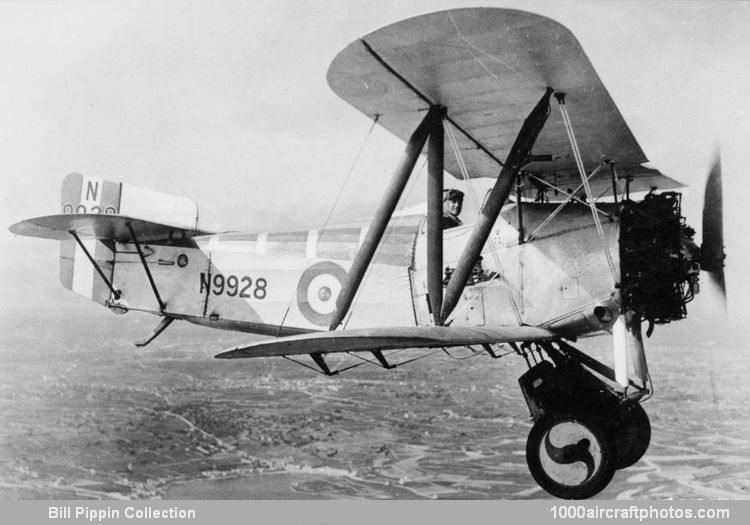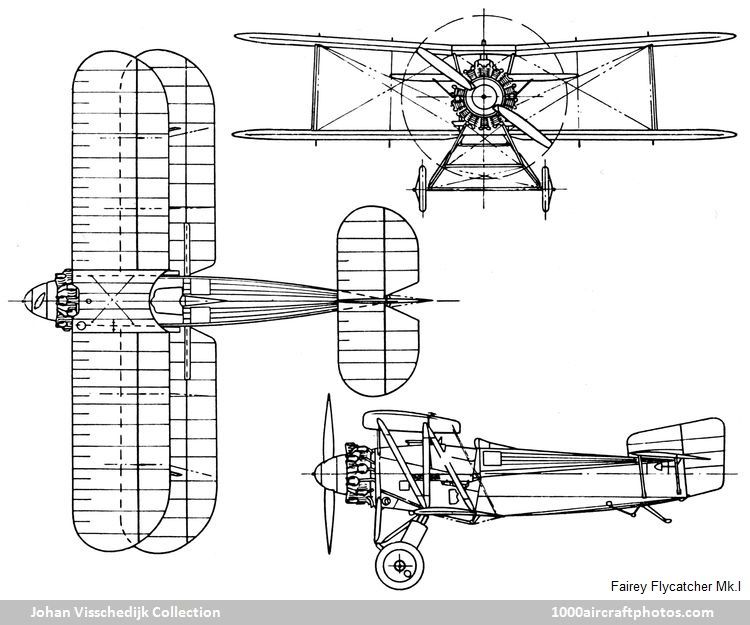06/30/2024. Remarks by Johan Visschedijk: "By 1922 it became obvious to even the acutely economy-conscious Air Ministry that a replacement for the Gloster Nightjar could no longer be delayed. Specification 6/22 for a new deck-landing single-seat fighter, powered by either the Jupiter or the Jaguar engine, was therefore issued.
Two firms, Fairey and Parnall, constructed prototypes to the requirement, both machines in their landplane versions sharing the common span of 29 ft (8.84 m), length of 23 ft (7.01 m) and height of 12 ft (3.66 m). In plan view they were much alike but the Plover from Parnall possessed slightly the greater wing area of the two.
The stocky little Fairey machine was designed by F. Duncanson and named the Flycatcher, the prototype N163 being flown initially during 1922 by Lt.-Col. Nicholl with the 400 hp Armstrong Siddeley Jaguar III fourteen-cylinder two-row radial engine. In 1924 it was reengined with the 425 hp Bristol Jupiter IV nine-cylinder radial but the Flycatcher went into production in 1923 with the 400 hp Jaguar IV.
The Flycatcher had an appealingly compact and aggressive appearance that was all its own, with dihedral on its upper wings only, and an impression conferred by its heavily-staggered wings of thrusting forward. The machine was specially arranged to dismantle into sections not exceeding 13 ft 6 in (4.11 m) long and was fitted with full-span Fairey camber-changing trailing-edge flaps on both sets of wings which, together with hydraulic brakes for the wheels, helped it to land in a stretch of 50 yards (45.72 m). The brakes were used in conjunction with the early type of fore-and-aft arrester gear on the Fairey oleo-pneumatic undercarriage.
Capt. Norman Macmillan flew a Flycatcher through the first diving tests officially called for by the Air Ministry for an aircraft, and the machine soon became known to the annual Hendon Air Display audiences through the noise created by the fluttering of the tips of its propeller blades as it pulled out of a dive. The Flycatcher was operated also on floats and as an amphibian with its pair of wheels set into the floats' undersides. Two Vickers guns, a 0.303 in (7.7 mm) and a 0.50 in (12.7 mm), were synchronized to fire past the propeller.
The Flycatcher was immensely strong, compared to the Parnall Plover, and soon asserted itself as the better machine under operating conditions and was therefore ordered in quantity, 192 aircraft, to become the standard single-seat fleet fighter for the ensuing nine years."

